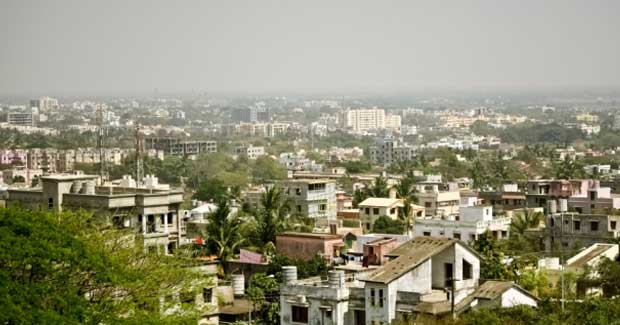It Will Be Advantage Urban Odisha When The State Turns 100 In 14 Years

Globally, over 50% of the population lives in urban areas. By 2045, the world’s urban population will increase by 1.5 times to 6 billion. City leaders must move quickly to plan for growth and provide basic services, infrastructure and affordable housing for their expanding populations.

About 17% of Odisha’s population – 70,03,656 inhabitants as per 2011 census – live in towns and cities. Although the 2021 census has been delayed by COVID-19, it is assumed that the state’s urban population is likely to be around 20%.
This trend is expected to continue, so by 2036 — when Odisha will turn 100 — the urban population will be around 30-35%. In other words, every third person of the state will be living in cities and towns.
With more than 80% of global GDP generated in cities, urbanization can contribute to sustainable growth if managed well by increasing productivity, allowing innovation and new ideas to emerge in Odisha.
However, the speed and scale of urbanization brings challenges, including meeting accelerated demand for affordable housing, well-connected transport systems and other infrastructure, basic services, as well as jobs, particularly for the nearly 30 million urban poor who live in informal settlements. Natural disasters are on the rise in Odisha, resulting in forcibly displaced people living in urban areas as migrants.
Once a city is built, its physical form and land use patterns can be locked in for generations, leading to unsustainable sprawl. The expansion of urban land consumption is likely to outpace population growth by as much as 50%, which is expected to add half a million sq km of new urban built-up area in Odisha. Such sprawl puts pressure on land and natural resources, resulting in undesirable outcomes. Cities account for two-thirds of the state’s energy consumption and will account for more than 70% of greenhouse gas emissions.
Cities play an increasingly important role in tackling climate change, because their exposure to climate and disaster risk increases as they grow. Almost half of urban residents live in coastal areas, increasing their vulnerability to storm surges and sea level rise.
Over half of the state’s existing urban areas are located in coastal areas. There are about 3.5 million people and over Rs 1000 crore in assets exposed to coastal floods. Around 90% of urban expansion in Odisha is near hazard-prone areas and built through informal and unplanned settlements.
Cities are also in the frontline of combating epidemics. Cities across the globe are currently being tested to the extreme by COVID-19 pandemic. It is impacting not only public health but also the economy and social fabric. COVID-19 — which has resulted in a health crisis, social crisis and economic crisis — is laying bare how cities are planned and managed, and the impact this is having on the extent to which each city is able to function – or not – especially during times of crisis.
COVID-19 was a massive challenge for cities on the frontline, rich and poor alike. The measures taken to control the spread of the virus are having massive implications on cities due to their economic structure, their preparedness for such a crisis – especially the state of their public health and service delivery systems – and the extent to which their population’s health and livelihoods are vulnerable, all of which are a function of the effectiveness of their urban governance systems.
In normal times, there might be many attributes that cities strive to compete in and excel at the global as well as national level, including liveability, competitiveness and sustainability. But on any given day, especially in times of crisis, a city must function well for its citizens.
Making cities which are functional– inclusive, healthy, resilient and sustainable – requires intensive policy coordination and investment choices. Local governments have an important role to play and take action now, to shape the future of their development and create opportunities for all.
Odisha has an advantage due to its slow urbanization process, which gives the state an opportunity to rebuild existing cities and towns, have new towns without facing challenges that existing big cities are facing.
Odisha has an interesting journey ahead as the state looks to prosper and improve quality of life.

Comments are closed.